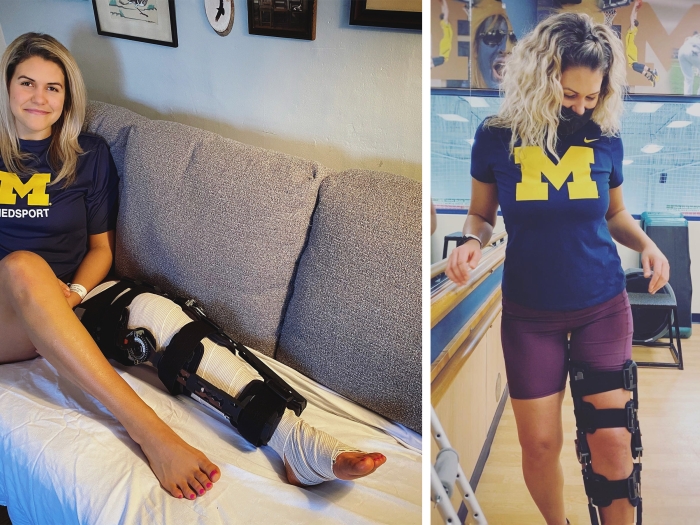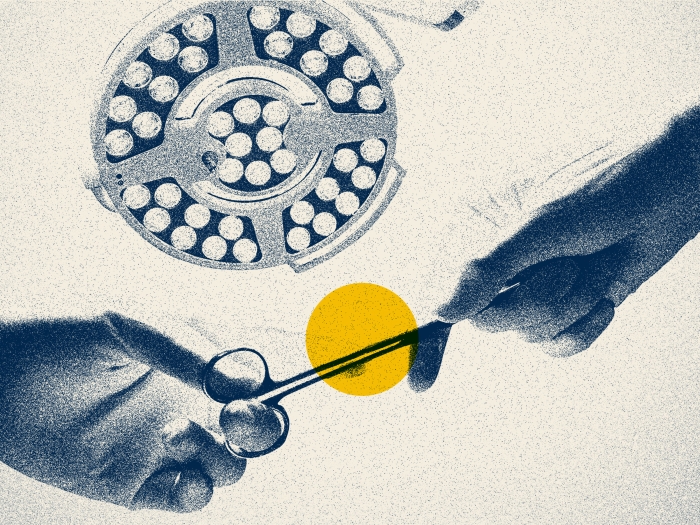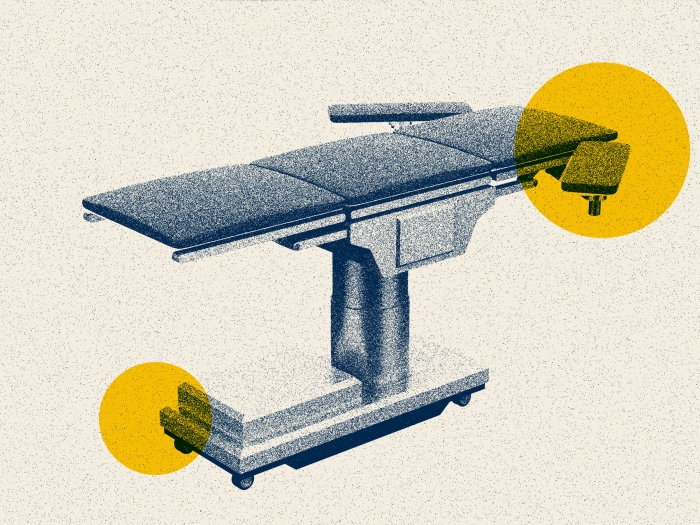Inserting screws in the pelvis for growth-friendly treatment of scoliosis can be painful and lead to infection in this patient population.
5:00 AM
Author |

A new Michigan Medicine study finds that some children with cerebral palsy and scoliosis do not require pelvic fixation when undergoing growing rod treatment, potentially avoiding several complications.
Using data from around 20 health systems, researchers analyzed nearly 100 pediatric patients with cerebral palsy and scoliosis treated with growth-friendly implants, in which expandable rods are inserted into the back to help control the spinal curvature while still allowing the spine to grow. They found that for children with a pelvic tilt and lower lumbar spine tilt of fewer than 10 degrees, the pelvis did not need to be included when inserting growing rods. The results are published in Spine Deformity.
"Inserting screws into the pelvis to anchor the growing rods is not benign; screws in that area tend to be more prominent," said G. Ying Li, M.D., lead author of the paper and pediatric orthopaedic surgeon at University of Michigan Health C.S. Mott Children's Hospital.
"Prominent screws can be painful and can also cause overlying skin breakdown, leading to infection. In the past, there has also been a high rate of these screws failing. For these reasons, understanding which kids have enough of a tilt in their pelvis and lower lumbar spine to benefit from anchoring the rods into the pelvis is important."
Children with cerebral palsy have abnormal nerve and muscle control, and many of them are wheelchair users. When they develop scoliosis, the curve in their spine tends to be longer and more sweeping than those without the condition. The curve may extend into the pelvis, affecting standing and sitting balance and causing pressure that can make sitting more painful or lead to skin breakdown.
Patients treated with growing rods require more than one surgery, and most children eventually need a spinal fusion. Growth-friendly treatment is already associated with more complications than a single spinal fusion. For patients with cerebral palsy who have a small enough pelvic tilt, Li says, it is beneficial to avoid inserting screws into the pelvis in the early stages of growth-friendly treatment.
"Even though we did see some children with growing rods anchored to the spine who later needed to have the rods anchored to the pelvis, we inserted those pelvic screws when kids were undergoing their final spinal fusion procedure," she said.
"These findings provide fellow surgeons with more information to help patients avoid complications while still correcting a curve that can impact quality of life, pain and lung development for children with cerebral palsy."
Paper Cited: "Pelvic Fixation is not always necessary in children with cerebral palsy scoliosis treated with growth-friendly instrumentation," Spine Deformity. DOI: 10.1007.s43390-022-00474-z
Additional authors include: Jennylee Swallow, M.S., Michigan Medicine, Joel Gagnier, Ph.D., N.D., M.Sc., Michigan Medicine and U-M School of Public Health, John T. Smith, M.D., Primary Children's Medical Center, University of Utah, Robert F. Murphy, M.D., Medical University of South Carolina, Paul D. Sponseller, M.D., Johns Hopkins Medicine, Patrick J. Cahill, M.D., Children's Hospital of Philadelphia, Pediatric Spine Study Group

Explore a variety of health care news & stories by visiting the Health Lab home page for more articles.

Department of Communication at Michigan Medicine
Want top health & research news weekly? Sign up for Health Lab’s newsletters today!





